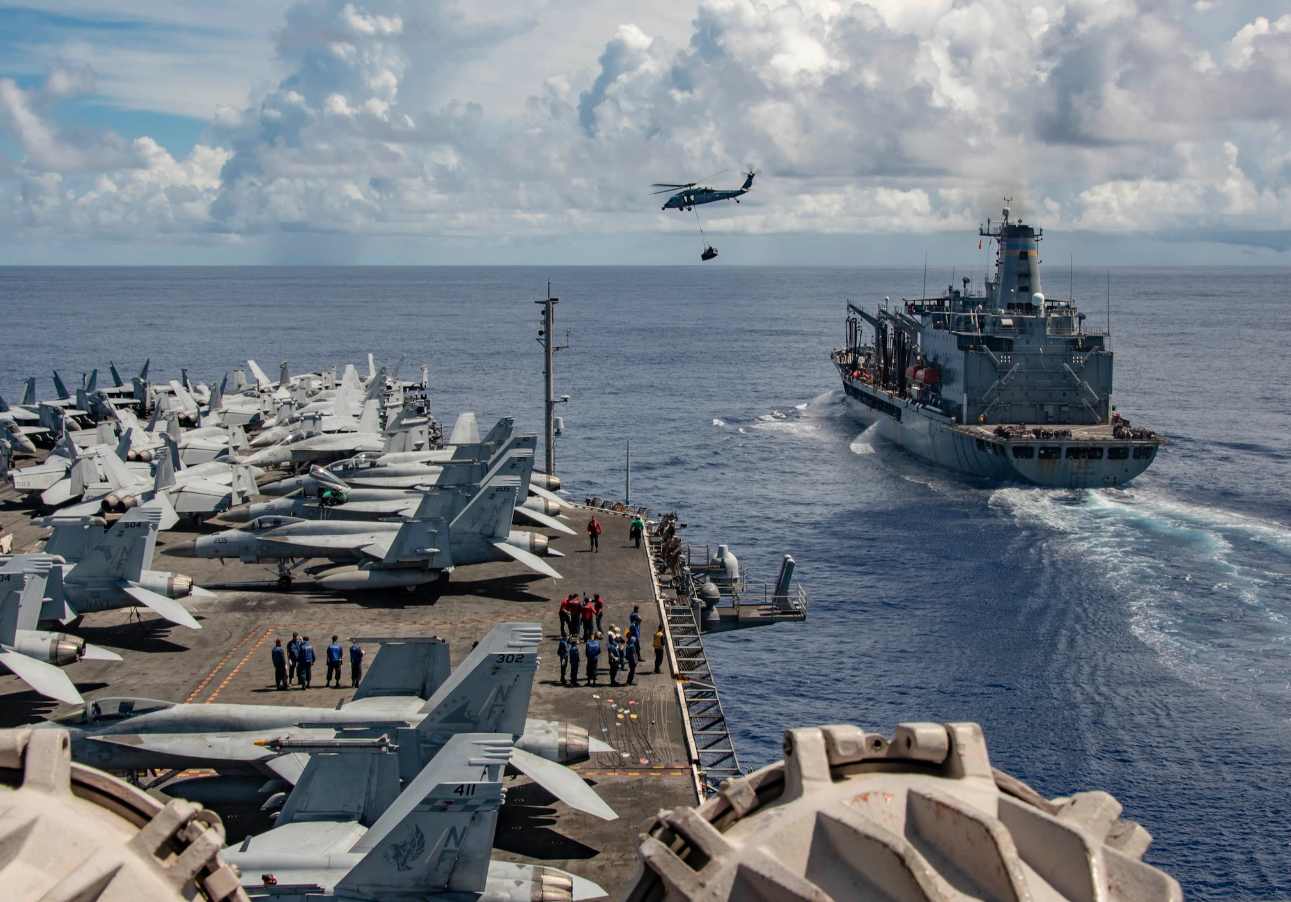The US Navy has recently located and retrieved the wreckage of an MH-60 Blackhawk helicopter, along with the remains of three Army special operations soldiers.
Russia Finally Finds Counter To HIMARS Shoot & Scoot Capability; RuMoD Says 2 Launchers Destroyed
Russia’s Hypersonic Missiles “Fall Flat” In Ukraine; Kyiv Says All 10 KH-47 Kinzhal Missiles Shot Down
The helicopter had crashed into the Mediterranean Sea on November 10, prompting an extensive search and recovery effort.
The discovery of the Black Hawk and the crew’s bodies comes several weeks after the incident, which occurred approximately miles off the coast of Cyprus during what the Pentagon described as a routine flight training operation.
The MH-60 Black Hawk and its crew, members of the 160th Special Operations Aviation Regiment, were engaged in aerial refueling training when they experienced an emergency leading to the crash.
The 160th Special Operations Aviation Regiment soldiers were present in the region as part of a broader deployment of American forces in response to the conflict in Gaza initiated by Israel.
The five soldiers involved in the crash have been identified as Chief Warrant Officer 3 Stephen R. Dwyer, Chief Warrant Officer 2 Shane M. Barnes, Sgt. Andrew P. Southard, Staff Sgt. Tanner W. Grone, and Sgt. Cade M. Wolfe. All of them were members of the 160th.

While two of the casualties were promptly recovered, the remains of the other three took over a month to locate. An ongoing investigation is being conducted to determine the cause of the crash.
Cmdr. John Kennedy, the commander of the Navy task force overseeing the recovery mission, expressed gratitude for the collaborative efforts of highly trained sailors, soldiers, and civilians in the joint Army-Navy team.
He highlighted the importance of their expertise in safely retrieving the helicopter. The Navy and Army search and rescue team utilized a 4,100-pound remote-operated Deep Drone, capable of reaching depths of 8,000 feet below the surface, due to the location of the crash in the Mediterranean Sea.
“The success of this mission can be attributed to highly trained Sailors, Soldiers, and civilians from the combined Army-Navy team who came together and displayed extreme skill to safely recover the helicopter,” said Cdr. John Kennedy. “Everyone onboard was humbled by the opportunity to play a small role in helping to bring closure to grieving families.”
US Navy Continue CV-22 Osprey Search & Recovery Efforts
The crash on November 10 marked one of several tragic aircraft incidents within the US military in 2022. Subsequent to this incident, an Air Force Special Operations Command CV-22 Osprey crashed off the coast of Japan, resulting in the loss of eight crew members.
Seven of the crewmen have been recovered, and efforts are ongoing to locate the remaining individual. The cause of the accident is currently under investigation.
The Air Force Special Operations Command said that divers are actively searching the waters around Yakushima, an island just south of Kyushu, the southernmost of Japan’s four main islands, in the quest to recover the remains of Maj. Eric Spendlove, 36, of St. George, Utah.
While the primary focus remains on locating and recovering the eighth Airman, the salvage teams are also concurrently working to retrieve the tiltrotor aircraft, according to statements from the Air Force Special Operations Command.
The USNS Salvor, a Navy rescue and salvage ship, joined the search on December 23, collaborating with teams from the Japan Coast Guard, Japan Self-Defense Force, local law enforcement, volunteers, and other US military assets.
The extensive search effort involves at least 46 US and Japanese aircraft, 11 aerial drones, and 23 ships. Additionally, ten underwater unmanned vessels and over 50 divers have been deployed to scour the ocean floor for any traces.
Following the crash, a service-wide operational standdown was implemented for Ospreys by the Air Force, Navy, and Marine Corps. This grounding will persist until the investigation determines the cause of the crash and recommendations are made for the safe return of the aircraft to service.
Since 2007, over 50 US service members have tragically lost their lives in Osprey crashes, and a particularly concerning trend reveals that 20 of these fatalities occurred in four crashes within the last 20 months.
The Marines, with nearly 400 of these aircraft in service, depend heavily on Ospreys for their airborne operations. The grounding has prompted the Air Force Special Operations Command to actively seek ways to mitigate the repercussions of losing its aircraft.
Concurrently, the Navy is undergoing a transition, moving from sea-based operations to utilizing greyhound propeller planes. This shift is part of a broader strategic adjustment within the Navy’s aviation capabilities.
- Contact the author at ashishmichel@gmail.com
- Follow EurAsian Times on Google News